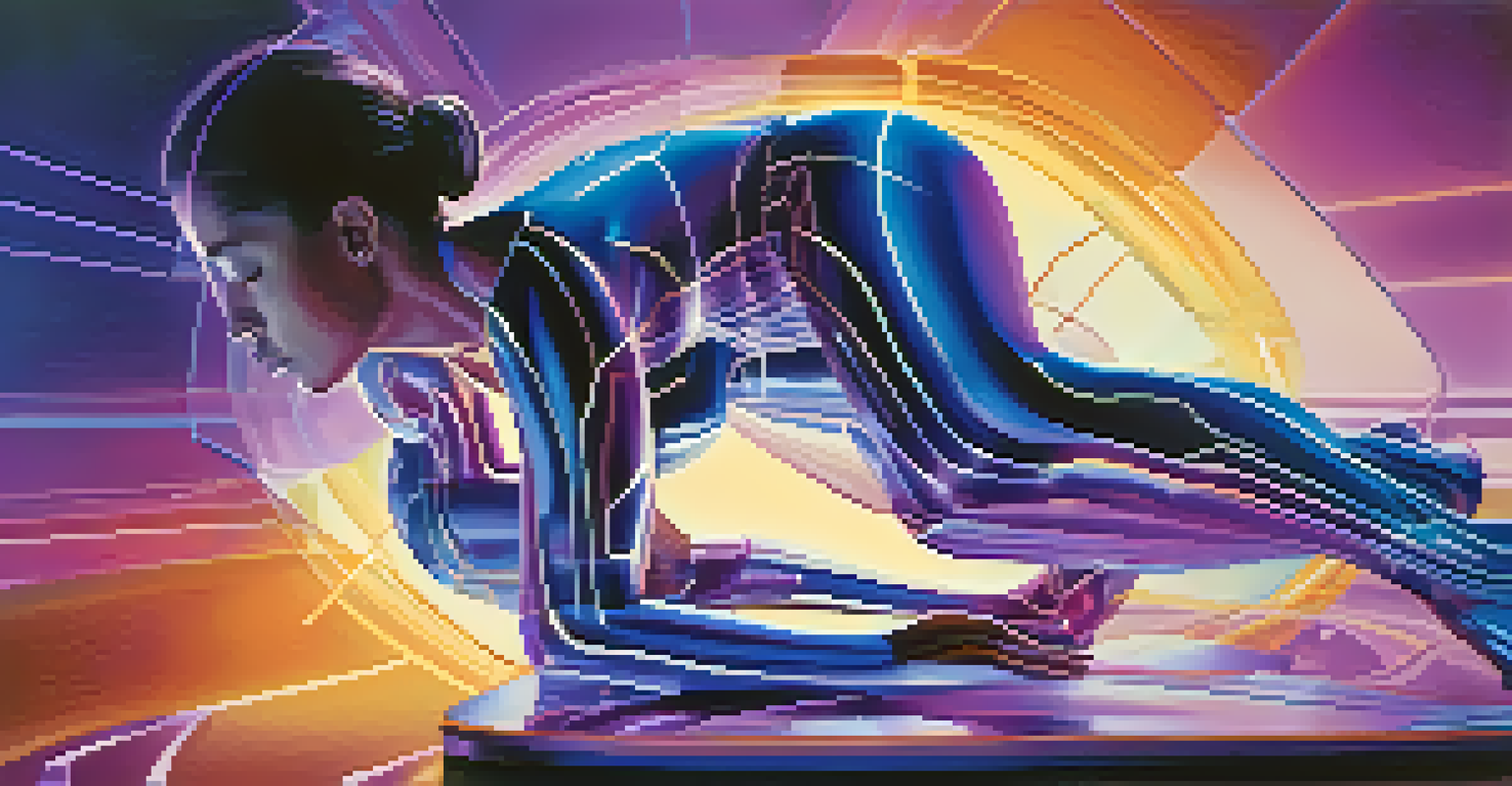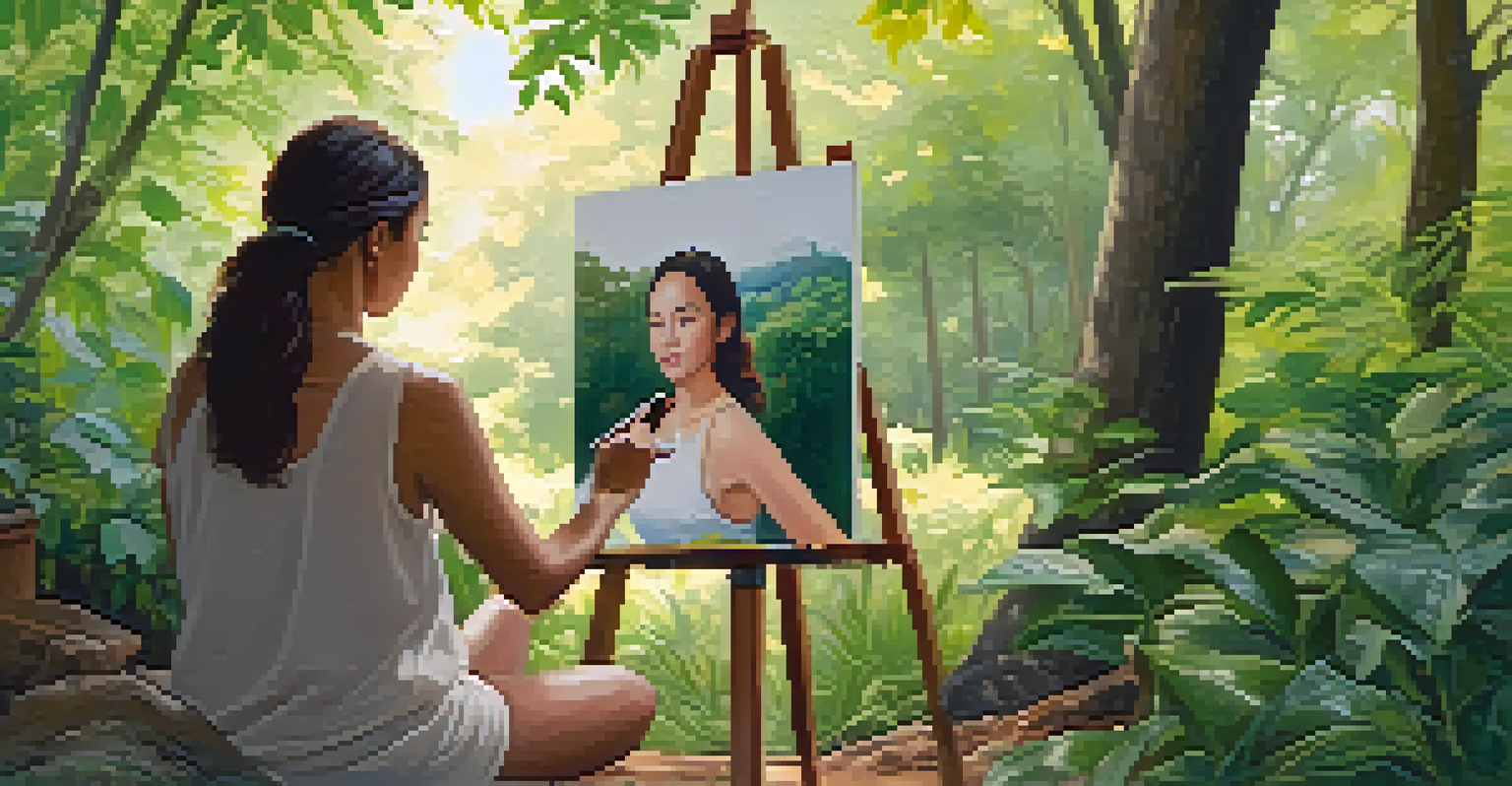The Body in Contemporary Art: A New Perspective

Understanding the Body's Role in Contemporary Art
In contemporary art, the human body serves as a canvas, a subject, and a medium. Artists explore its physicality to express identity, emotion, and social issues. This multifaceted approach invites viewers to engage with the body not just as a physical entity but as a symbol of broader cultural narratives.
The body is a living, breathing, thinking thing that reacts to the world around it, which is why it can be an extraordinary tool for political expression.
For instance, performance art often uses the body to convey messages that words cannot. By moving and interacting in real-time, artists create a visceral connection with their audience, making the experience both personal and communal. This blurring of boundaries between artist and viewer transforms the traditional art experience into a dynamic dialogue.
Moreover, the body in contemporary art challenges societal norms and expectations. Artists like Marina Abramović and Orlan have provoked discussions about beauty standards, gender roles, and what it means to inhabit a body in today's world. This critical examination helps us reflect on our own perceptions and assumptions.
The Influence of Technology on Body Representation
Technology has profoundly impacted how bodies are represented in contemporary art. Digital tools and virtual reality allow artists to manipulate and reimagine the body in ways previously unimaginable. This shift not only expands artistic possibilities but also raises questions about the nature of reality and identity.

For example, augmented reality can create experiences where the body is enhanced or altered in real-time, challenging our understanding of physical limitations. It encourages viewers to question the authenticity of what they see and experience. This layer of complexity adds depth to the conversation around body image and perception.
Body as Art: A Cultural Canvas
Contemporary artists use the body to explore identity, emotion, and social issues, inviting viewers to engage with broader cultural narratives.
Furthermore, social media platforms have become a stage for artists to showcase their work, often featuring their own bodies. This practice democratizes art-making and invites a diverse range of voices to participate in the dialogue about body image, self-representation, and societal expectations.
Cultural Perspectives on the Body in Art
Cultural backgrounds significantly shape how the body is perceived and represented in art. Different societies bring unique narratives and values that inform artistic practices. Understanding these cultural contexts enriches our appreciation of contemporary artworks and the stories they tell.
Art is not freedom from discipline, but disciplined freedom.
For instance, African and Indigenous artists often incorporate traditional body adornment, such as tattoos and body paint, into their works. These practices carry deep cultural significance and serve as a means of storytelling. By showcasing these elements, artists challenge Western-centric views of beauty and provoke discussions about cultural identity.
Similarly, the body in Asian contemporary art frequently reflects themes of spirituality and harmony with nature. Artists like Yoshitomo Nara and Takashi Murakami use their works to explore the intersection of traditional and modern values, highlighting how cultural heritage influences contemporary expressions of the body.
The Body as a Site for Political Expression
In contemporary art, the body is often a powerful tool for political expression. Artists use their bodies to confront social injustices, advocate for marginalized communities, and challenge oppressive systems. This approach elevates the body from a mere subject to a political statement.
For example, the work of artists like Ai Weiwei highlights issues such as human rights and freedom of expression. By incorporating his own body into his art, he personalizes these global issues, making them more relatable and urgent to viewers. This strategy invites audiences to engage in critical conversations about power dynamics and accountability.
Technology Shapes Body Representation
Advancements in technology, such as digital tools and social media, allow artists to redefine body representation and engage diverse perspectives.
Moreover, the body can also symbolize resilience and resistance. Artists like The Guerrilla Girls utilize their bodies to challenge sexism and racism in the art world. Their performances and campaigns serve as reminders of the ongoing struggle for equality and justice, demonstrating how the body can embody activism.
Exploring Identity Through the Body in Art
The exploration of identity is a rich vein within contemporary art, with the body serving as a central theme. Artists often use their bodies to express personal narratives, reflecting their experiences of race, gender, sexuality, and more. This introspective approach allows for a deeper understanding of the self in relation to society.
For instance, artists like Frida Kahlo and Cindy Sherman have used their bodies to explore themes of femininity, identity, and self-representation. By presenting their bodies in unique ways, they challenge conventional notions of beauty and identity, paving the way for future generations of artists to do the same.
This exploration extends beyond personal identity to encompass collective experiences. Artists often draw from cultural heritage or shared histories to comment on the broader human experience. This intersection of personal and collective narratives fosters empathy and connection among viewers.
The Body in Performance Art: A Living Canvas
Performance art uniquely positions the body as a living canvas, where the act of creation itself becomes the artwork. In this realm, the artist's physical presence is integral to the experience, offering audiences a direct interaction with the body as art. This immediacy creates a powerful connection that traditional mediums may not achieve.
Artists like Yoko Ono and Chris Burden have pushed the boundaries of performance art, using their bodies to explore themes of vulnerability, endurance, and social commentary. Through their performances, they invite viewers to witness the physical and emotional journeys they undertake, often leaving a lasting impact.
Political Power of the Body in Art
The body serves as a powerful tool for political expression, enabling artists to confront injustices and advocate for marginalized communities.
Moreover, the ephemeral nature of performance art highlights the transient quality of the body. Unlike a painting or sculpture, a performance exists only in the moment it unfolds, making it a unique and fleeting experience. This impermanence encourages audiences to reflect on the significance of the body and its role in shaping our understanding of art.
The Future of the Body in Contemporary Art
As contemporary art continues to evolve, so too does the representation of the body. Emerging artists are experimenting with new mediums and technologies, pushing the boundaries of how we think about the body in art. This ongoing exploration promises to unveil fresh perspectives and provoke new dialogues.
For example, the rise of artificial intelligence and machine learning in art creation introduces intriguing possibilities for body representation. Artists can now create digital avatars or alter their own bodies in ways that challenge our perceptions of reality. This fusion of technology and art opens up exciting avenues for expression and innovation.

Looking ahead, the dialogue surrounding the body in contemporary art will likely expand to include discussions on ethics, representation, and inclusivity. As diverse voices continue to emerge, the conversation will reflect a broader spectrum of experiences and identities, enriching the art world and our understanding of what it means to be human.